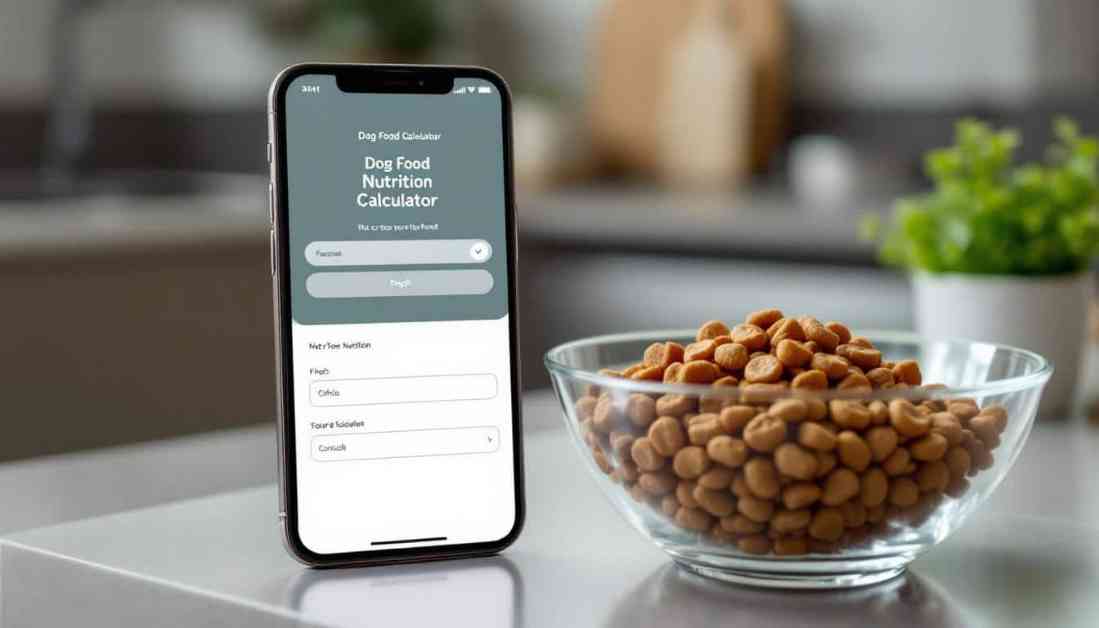Feeding your furry friend the right food is more than just a chore—it’s a critical aspect of their health and happiness. At DogingtonPost, we understand the struggles of navigating the complex world of canine nutrition. That’s why we’re excited to introduce you to a game-changing tool that will revolutionize the way you plan your dog’s meals: the dog food nutrition calculator.
These calculators are not just another online gadget; they are powerful tools designed to take the guesswork out of meal planning for your beloved pet. By utilizing these calculators, you can ensure that your pup receives the perfect balance of essential nutrients tailored to their specific needs.
The Power of Precision Feeding
Imagine having a tool at your fingertips that can determine the exact amount of food your dog needs based on their weight, age, and activity level. That’s precisely what a dog food nutrition calculator does. By inputting key information about your furry companion, such as their current weight, ideal weight, age, and activity level, these calculators process the data to provide you with a recommended daily calorie intake.
The Importance of These Tools
The significance of utilizing a nutrition calculator for your dog goes beyond just preventing overfeeding. In a world where 59% of dogs in the US are overweight or obese, these calculators play a crucial role in ensuring that your furry friend receives the right mix of essential nutrients to thrive. Protein for muscle development, fats for energy, carbohydrates for quick energy, and fiber for digestion—all of these elements are vital for your dog’s overall health and well-being.
Understanding Key Nutrients
To make the most of these calculators, it’s essential to have a solid grasp of the key nutrients that make up your dog’s food. Protein, fats, carbohydrates, fiber, vitamins, and minerals—all of these components contribute to a balanced and nutritious diet for your pet. By understanding the role each of these nutrients plays in your dog’s health, you can make informed decisions when using a nutrition calculator to plan their meals.
The American Kennel Club emphasizes the importance of balanced nutrition for dogs, highlighting the role of a good calculator in achieving this balance. By leveraging these tools effectively, you can ensure that your dog receives the optimal mix of nutrients they need to thrive.
Mastering the Use of Dog Food Nutrition Calculators
Now that you understand the basics of dog food nutrition calculators and why they are essential, let’s delve into how you can use them effectively to tailor your dog’s diet to their specific needs.
Gathering Essential Information
To start, you’ll need to gather accurate data about your dog, including their current weight, ideal weight (if different), age, and activity level. Precise measurements are crucial, as even small discrepancies can impact the results. Be sure to use a reliable scale for weighing your dog and provide honest information about their activity level to get an accurate assessment.
Inputting Data and Selecting Food
Once you have all the necessary information, input it into the calculator and select the type of food you use. Different foods have varying caloric densities, so it’s essential to input the correct information about the calories per cup or kilogram. If this information is not readily available, consider reaching out to the manufacturer for clarification.
Interpreting Results
After inputting the data, the calculator will provide you with a recommended daily calorie intake and suggested portion sizes. It’s crucial to remember that these recommendations are starting points, not rigid rules. The American Animal Hospital Association advises monitoring your dog’s weight and adjusting portions as needed based on their response to the calculated values.
Avoiding Common Pitfalls
Many pet owners fall into common traps when using nutrition calculators, such as forgetting to account for treats, failing to recalculate as their dog’s needs change, or neglecting to adjust for wet food if mixed with dry kibble. By being mindful of these pitfalls and making adjustments as necessary, you can ensure that your dog’s diet remains balanced and tailored to their specific requirements.
Fine-Tuning Your Dog’s Diet
Once you have mastered the basics of using a dog food nutrition calculator, it’s time to take your pet’s diet to the next level by fine-tuning it to address specific health concerns, combine different types of food, and optimize their nutrition.
Adjust Portions for Optimal Health
Start by measuring and monitoring the suggested portion sizes for your dog’s meals. Use a kitchen scale for accuracy and keep a close eye on your dog’s weight to ensure that they are receiving the right amount of food. If you notice any unintended weight changes, adjust the portion size accordingly.
Address Health Concerns Through Diet
Nutrition plays a vital role in managing various health conditions in dogs, such as kidney disease or allergies. Consult with your veterinarian to determine the best way to modify your dog’s diet to address these concerns. You may need to adjust the protein, fat, or fiber content of their food or switch to a prescription diet to meet their specific needs.
Mix Wet and Dry Food
Many dog owners opt to combine wet and dry food to provide variety and added nutrition. When doing so, it’s crucial to adjust your calculations to account for the different caloric densities of each type of food. Check the packaging for the calorie content of each food type to ensure accurate portioning.
Introduce Changes Gradually
When making dietary changes, introduce them slowly over a period of 7-10 days to prevent digestive upset. This gradual transition allows your dog’s system to adapt to the new food or portions without any discomfort.
Monitor and Adjust
Regular monitoring of your dog’s weight, energy levels, and overall health is essential to fine-tuning their diet successfully. Pay attention to signs such as coat condition, stool quality, and overall well-being to determine if your feeding plan is working or if adjustments are needed.
Final Thoughts
Dog food nutrition calculators are invaluable tools that can transform the way you care for your pet by providing precise recommendations tailored to their unique needs. While these calculators are incredibly useful, they are not a substitute for professional veterinary advice, especially when dealing with specific health concerns or dietary requirements. By combining insights from nutrition calculators with guidance from your vet, you can set your dog up for a happy and healthy life filled with nutritious meals and regular check-ups.





















